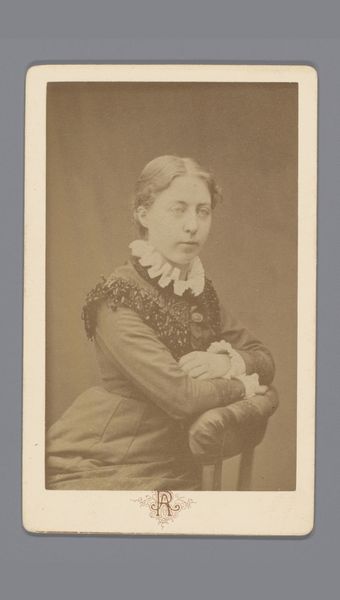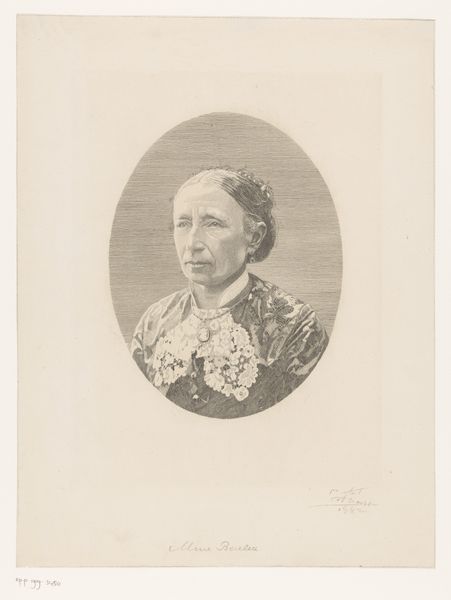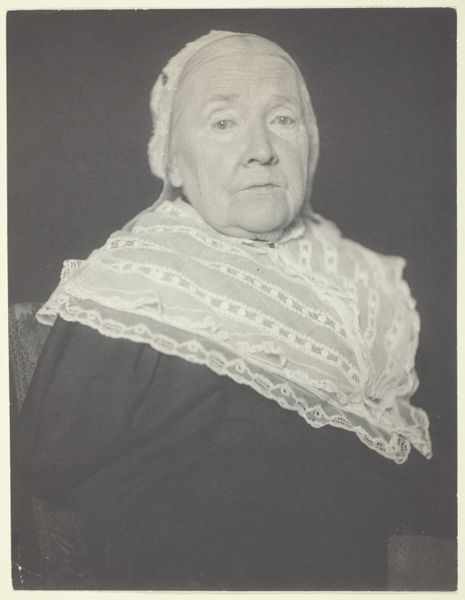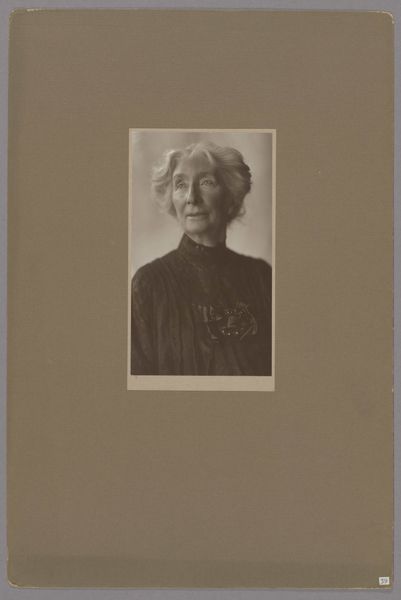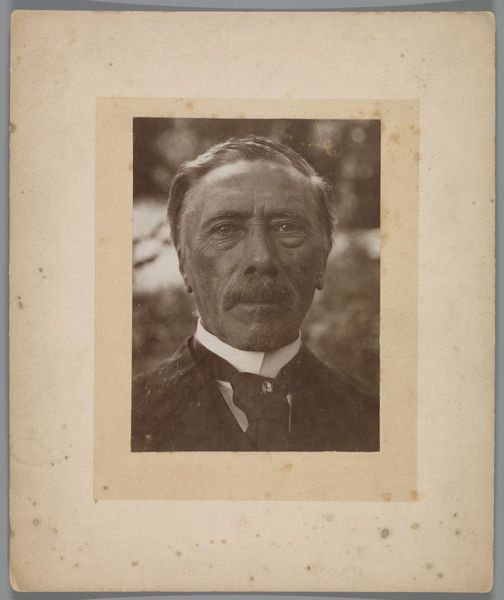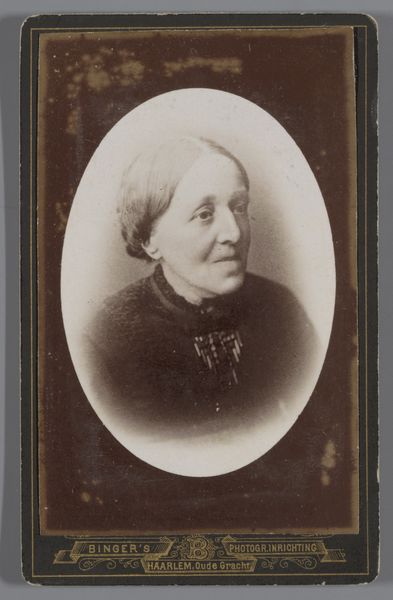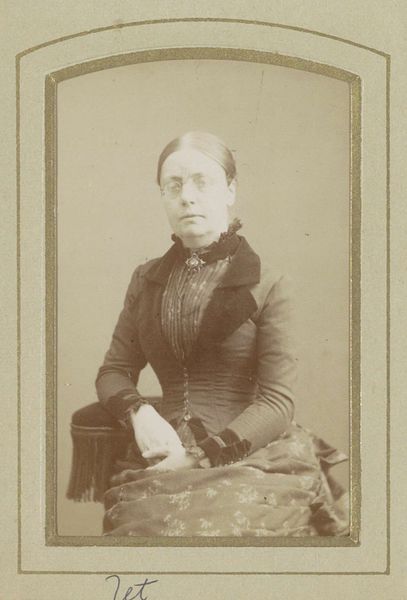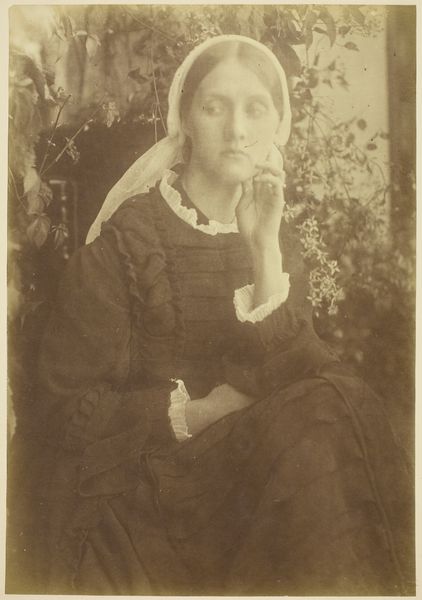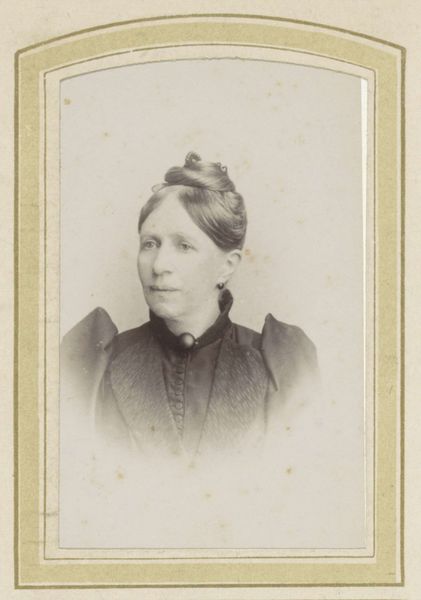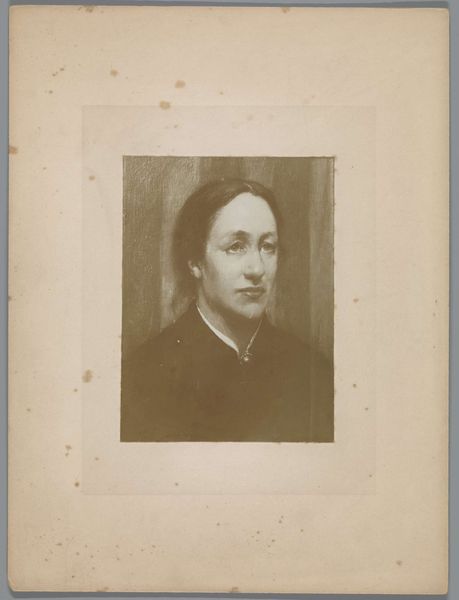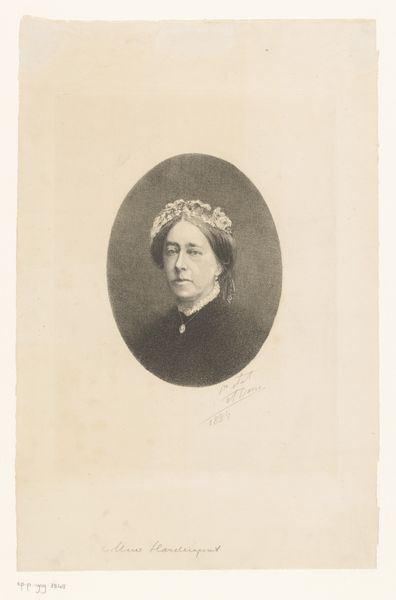
print, photography
#
portrait
#
print photography
# print
#
photography
#
historical photography
Dimensions: height 78 mm, width 50 mm
Copyright: Rijks Museum: Open Domain
Curator: Let's turn our attention to this arresting photographic portrait, believed to depict Anne M.L. van der Linden, who was Andries Bonger’s first wife. The date is estimated between 1920 and 1931, offering us a glimpse into the visual culture of that period. It is simply labeled "print". Editor: Oh, what a somber image! Her gaze feels so direct, almost challenging. There’s a weariness about her, yet also a certain dignity in the set of her jaw. I’m immediately drawn to that heavy fur collar; it feels both protective and perhaps a little suffocating. Curator: I'm fascinated by that collar as well. We can consider the context: fur would have been a marker of social standing, suggesting access to certain modes of consumption. Its presence here tells us something about how this woman wished to be represented or perceived. We also see this work has the mark of its provenance by bearing a location tag reading Kalverstraat 155. I feel like it offers an index to tracking down even more social context about her status and relations to photographic process and practices. Editor: You're right; there’s a definite sense of formality, of constructing an identity for posterity. The light is so even, almost clinical, casting her face into sharp relief. I wonder what the story is behind the photograph. Was it commissioned, a personal memento, or something else entirely? The printing method used clearly contributes to the vintage aesthetic that transports us back in time. Curator: The very nature of photographic printing and the chemical processes at play further deepens our insight. Every detail from exposure to developing tells a piece of her story through the very act of creating the print. How each element plays a vital part in making sense about how representation functions here. Editor: Yes! You got it. Looking at the fading tones and grain, I start wondering if there is another deeper significance, some emotional resonance with loss or memories preserved against oblivion? Photography is like this strange art, where sadness always lies hidden at the same time that its there. It’s quite beautiful, and kind of sad. Curator: Absolutely, the materiality informs meaning. In analyzing its components, it reveals complex social dynamics and creative practice during its moment of origin. This simple portrait speaks volumes regarding labor, means of production, and broader economies linked closely to cultural representation at a specific place, time and practice. Editor: And yet, even with all of that layered meaning, for me, it is this mystery and emotive human connection captured and sealed behind glass, that really matters here, still echoing softly, almost a century later. What a resonant feeling.
Comments
No comments
Be the first to comment and join the conversation on the ultimate creative platform.
